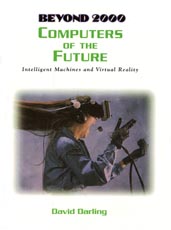COMPUTERS OF THE FUTURE: Intelligent Machines and Virtual Reality - Introduction

Intelligent robots that do chores around the home are just one of the amazing possibilities that may be realized sometime this century.
If a competition were held to choose the greatest invention of the twentieth century, there would be several contenders, including the airplane and the television set. On balance, however, the award would probably go to the computer – if only for the reason that it can be used in such an extraordinary number of ways.
No invention has developed as swiftly as the computer. Fifty years ago computers didn't even exist. Yet today there are many millions of them, large and small, influencing almost every aspect of our lives – often without realizing it. Moreover, in the years to come, computers will play an ever increasing role in the things we do.
Making predictions about the future is always risky. No one really knows how quickly or in what directions technology will progress. In the case of computers, trying to foresee developments is especially difficult. For instance, although the speed and power of computers have increased much faster over the past few decades than anyone guessed, it has proved much harder to make computers behave in an intelligent way. Even so, progress is being made towards building smart machines. A new type of computer, with connections similar to those found within the human brain, offers hope that machines may someday be built that can think and learn as well as humans do. Scientists are also making exciting progress in building robots that can walk, climb, and work in a great variety of environments, including the deep, dark ocean floor, the boiling heart of a volcano, and the forbidding surface of another planet.
Remarkable developments, too, have recently taken place in personal computers. These machines have now become so fast, compact, and easy to use that they can do things that would have seemed beyond belief only a generation ago. By linking, such computers to a huge communications network, people in different countries and on different continents today can share and exchange information on all sorts of subjects within seconds.
Another new breakthrough involves creating lifelike worlds within the computer and allowing people to interact with these virtually real worlds through special headsets and sensitive gloves. Eventually it may be possible to make entire rooms into virtual reality dioramas controlled by computer, like the holodeck aboard the famous starship Enterprise. Imagine what it would be like to play any character you cared to choose in any adventure, future or past, real or imaginary.
In these pages we shall look first at how computers have been developed and how they are used – and sometimes abused – in today's world. Then we shall explore some of the ways in which computers may evolve and affect our lives as we move through the twenty-first century.

